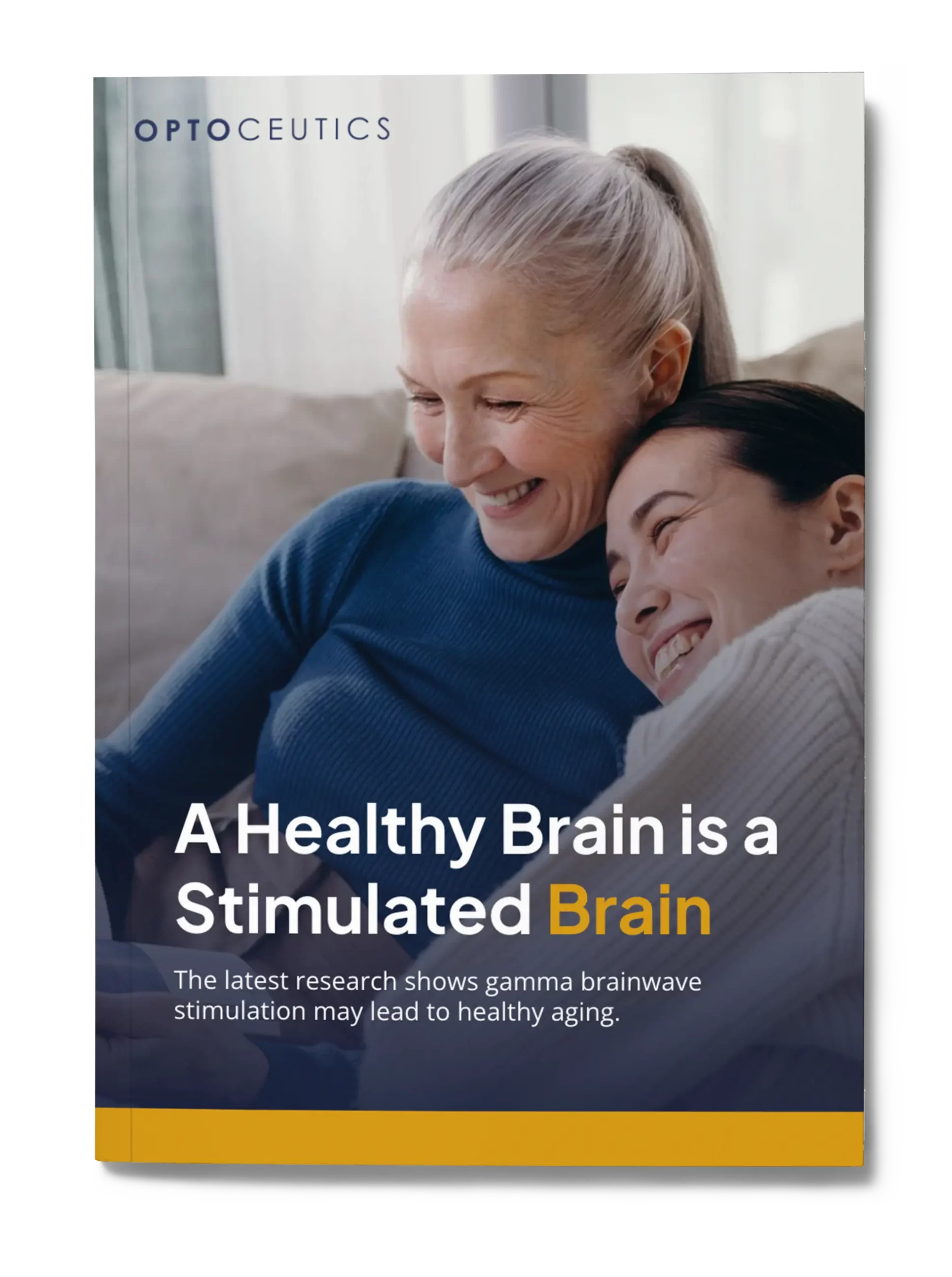Both Lewy body dementia (LBD) and Alzheimer’s disease are challenging conditions, but they affect the brain and present symptoms in distinct ways. This guide explores the key differences between LBD and Alzheimer’s, covering causes, symptoms, treatment options, and their impact on daily life, helping you gain a better understanding of these diseases. It’s important to remember that there’s no “worse” dementia; each has its own unique challenges.

Christopher Ravn
Key Takeaways
1. Lewy body dementia (LBD) and Alzheimer’s Disease (AD) are two very different types of dementia.
2. Lewy body dementia (LBD) is less common compared to Alzheimer’s Disease (AD) and affects people of all ages, including those who are younger.
3. Lewy body dementia (LBD) and Alzheimer’s Disease (AD) are caused by the accumulation of abnormal proteins in the brain, which triggers neuron degeneration.
Table of Contents
1. Lewy Body Dementia Vs. Alzheimer's
2. Differences Between Alzheimer’s Versus Lewy Body Dementia
3. Is Lewy Body Dementia Worse Than Alzheimer’s?
4. What Causes Lewy Body Dementia And Alzheimer's?
5. Diagnosis And Treatment In Lewy Body Dementia Vs. Alzheimer’s
6. Frequently Asked Questions About Lewy Body Dementia Vs Alzheimer's
Lewy Body Dementia Vs. Alzheimer's
Lewy body dementia (LBD) and Alzheimer’s Disease (AD) are two very different types of dementia. While these conditions have similarities, they have differences in symptoms, causes, and progression.
Lewy body dementia (LBD) affects around 1.4 million people in the United States, especially those who are 50 years of age or older. Behavior, perception, awareness, problem-solving, mood swings, alertness, and movement problems are just a few of the symptoms that LBD patients suffer from. It is a result of abnormal Lewy body proteins in the brain, which are also associated with Parkinson’s disease. Patients may also suffer from memory loss and hallucinations as the disease progresses.
On the other hand, 5.8 million people in the United States suffer from Alzheimer’s disease, which is seen in those who are 60 years and older. The disease is caused by an abnormal protein, such as amyloid in the brain or tau protein, that disrupts nerve signals. This causes symptoms such as memory loss, awareness and language issues. As the disease progresses, the patient suffers from hallucinations and memory loss. Certain medications may manage the disease but there is no cure.
Prevalence Of LBD And Alzheimer’s
Lewy body dementia (LBD) is less common compared to Alzheimer’s Disease (AD) and affects people of all ages, including those who are younger. Thus, it is important to know at what age does dementia start. The prevalence of LBD is still unknown, but it is said to account for 10–15% of dementia cases. In 2020, studies showed that Alzheimer’s Disease affects 6.5 million Americans aged 65 years and older. Statistics show that Alzheimer’s disease was the 6th leading cause of death in the United States in 2019, accounting for about 122,000 deaths.
Early Signs In Alzheimer’s Vs. Lewy Body
- Both LBD and AD may cause memory issues. However, AD has more prominent memory issues compared to LBD.
- Patients suffering from either one of these diseases suffer with daily tasks such as grooming, eating, and even managing their finances.
- LBD and AD patients struggle with mood changes such as anxiety, depression, and irritability.
- Both conditions may cause sleep issues such as restless sleep, daytime fatigue, and insomnia.
Differences Between Alzheimer’s Versus Lewy Body Dementia
- The progression and life expectancy for LBD are that it has a shorter lifespan and progresses rapidly. AD, on the other hand, progresses slowly and has a longer lifespan.
- Alzheimer’s patients have a higher quality of life, and patients have better mental, social, and physical independence compared to those with LBD.
Cognitive Differences
There are cognitive differences between Lewy body dementia (LBD) and Alzheimer’s Disease (AD). LBD patients struggle with memory retrieval, whereas AD patients struggle with cognitive issues. This is because, in LBD, the frontal and subcortical structures are affected, whereas, in AD, the temporoparietal cortical structures are affected. Cognitive decline appears in the later stages of LBD compared to AD. Moreover, AD patient’s primary symptoms are cortical and LBD patients have a mixture of cortical and subcortical issues.
Behavioral Symptoms
Commonly, both Alzheimer’s Disease (AD) and Lewy body disease (LBD) share common behavioral symptoms. It affects the patients daily lives in terms of behavior. For AD, the behavioral issues are restlessness, agitation, aggression, fear, anxiety, depression, Alzheimer’s hallucinations, delusions, and sleep issues. For patients suffering from LBD, they suffer from visual hallucinations, difficulty walking, tremors in their legs, arms, and hands, a lack of emotional expression, and issues with their sleep.
Physical Symptoms
Both Lewy body dementia (LBD) and Alzheimer’s Diseases are separate disorders that may share certain commonalities but have their own physical differences. LBD patients experience motor issues, including Parkinsonian symptoms such as tremors, rigidity, slow movement (bradykinesia), and instability in their posture. LBD patients also have problems with their cognition, such as attention span, concentration, and moments of being unresponsive. AD patients, on the other hand, go through a gradual decline in their memory and other cognitive issues such as learning or processing new information, being unable to remember recent events, confusion, disorientation, and changes in mood.
Is Lewy Body Dementia Worse Than Alzheimer’s?
Lewy body dementia (LBD) affects those who are 50 years and older, progresses faster than Alzheimer’s Disease (AD), may occur on its own or compounded with other brain issues, varies with each patient and has no cure. As for Alzheimer’s Disease, it is more common in women compared to men and affects those who are 65 years and older. The disease progresses in a gradual order and there is no cure for the disease.
Impact On Daily Life Between LBD And Alzheimer’s
- Disorganization in thinking and ideas causes them to have issues with activities such as cooking, cleaning, and managing finances
- Changes in attention, wakefulness, alertness and concentration
- Unable to think well, which interferes with social interaction and daily activities.
- Fluctuations in heart rate, body temperature, and blood pressure.
- Memory loss, thus causing them to ask or repeat the same questions.
- Issues with making decisions and a heightened risk-taking behavior
- Issues with paying the bills and completing tasks lead them to feel frustrated and dependent on their caretakers.
- Personality, behavioral changes, or even mood changes affect relationships and interactions with loved ones.
Caregiver Challenges
Caregivers of Alzheimer’s and Lewy body dementia patients go through challenges that affect their relationships and mental, physical, and overall well-being.
Caregivers of Alzheimer’s Disease go through an emotional burden, including depression, anxiety, a struggle to maintain their purpose and identity, going through chronic and exhausting episodes that affect their mental and physical health, and thus experiencing burnout.
On the other hand, caregivers of Lewy body dementia struggle with sleep issues that worsen their mental and physical health and experience depression and anxiety due to LBD patients being unpredictable. They may experience frustration and eventually develop feelings of guilt and remorse due to their inability to provide the required level of care.
We Believe Prioritizing Brain Health Enhances Your Quality Of Life
Get to know our team, our mission and how our EVY LIGHT® can provide you and your loved ones with a fuller life, letting you breathe a little easier.
What Causes Lewy Body Dementia And Alzheimer's?
Lewy body dementia (LBD) and Alzheimer’s Disease (AD) are caused by the accumulation of abnormal proteins in the brain, which causes neuron degeneration.
Alpha-synuclein protein buildup in the brain results in the formation of Lewy bodies and Lewy neurites, which is the cause of LBD. The proteins are abnormal and aggravate the brain’s cortex regions, especially the neocortex area. This causes the neuron to degenerate and affects a person’s normal brain function.
There are two types of abnormal proteins, such as amyloid-β (Aβ) and tau, that affect the brain’s hippocampus and neocortex. This causes the neurons to degenerate and disrupt normal brain functionality.
Genetic Factors
The role of genetics in each disease is that Alzheimer’s Disease is due to the APOE gene, APP, PS1, PS2, and AβPP, which have been discovered to cause Alzheimer’s Disease. These genes may be part of the processing and clearing of the amyloid-β peptides that cause the brain to continue functioning normally.
Lewy body dementia is due to the SNCA gene, which encodes alpha-synuclein protein, variants of the APOE gene, and other genes such as SCNB, which are known to process and clear alpha-synuclein. Thus, without clearing this, it will develop into Lewy body dementia.
Environmental And Lifestyle Factors
Environmental and lifestyle factors play a part in the development of Lewy body dementia (LBD) and Alzheimer’s Disease. If done right, these factors may decrease the risk of developing the disease. Thus, many lifestyle factors play a role in Alzheimer’s disease (AD). Research suggests that Sporadic Late-Onset Alzheimer’s Disease (LOAD) accounts for 95% of cases, and while genetic factors are known to contribute to LOAD, the specific genetic causes remain unknown. Hence, it is indicated that environmental factors such as lack of education, nutrition, exercise, and exposure to harmful materials such as metal and pesticides may contribute to LOAD. (Zhang et al., 2020)

Diagnosis And Treatment In Lewy Body Dementia Vs. Alzheimer’s
Diagnosing Lewy Body Dementia (LBD) and Alzheimer’s Disease (AD) can be challenging. This is because the two conditions share similarities, despite having distinct approaches to differentiation. When considering the development of symptoms, LBD is said to progress more rapidly, often within a year. In contrast, AD typically features a gradual decline in cognitive abilities over time.
The diagnosis of LBD is made with the presence of dementia and at least two or more conditions, such as hallucinations, cognitive issues, Parkinsonism, or rapid eye movement sleep behavior disorder (RBD). A Lewy body is suspected if the patient shows signs of dementia with Parkinson-like motor issues. However, if dementia takes place around 12 months after Parkinson’s disease, then the patient is diagnosed with Parkinson’s disease dementia. With proper neurologic testing, a healthcare professional can tell if the patient is suffering from Parkinson’s or Lewy body dementia. This is because, by diagnosing correctly, patients will be given proper antipsychotic medication.
Treatment Approach
An overview of treatment strategies for Alzheimer’s Disease includes medications such as cholinesterase inhibitors and memantine. Moreover, there are non-pharmacological therapies such as leisure activities, social interactions, brain exercises to prevent Alzheimer’s, memory cafes that provide activities and home modifications to prevent unwanted falls and safety.
As for Lewy body dementia, treatment strategies such as memantine medication are available for those who are unable to consume AChe inhibitors. Depending on the diagnosis, some patients are provided with antidepressants, antipsychotics, and anti-anxiety drugs. Non-pharmacological therapies range from cognitive behavioral therapy, music therapy for dementia and a myriad of treatments by neurologists, psychiatrists, geriatricians, nurses, and caretakers.

Enhance your brain performance through the power of light.
Comfortable and easy to use 40Hz light therapy to support and improve your brain function.
View Our LightResearch And Advances
At present, there are around 141 drugs that are being tested for the treatment of Alzheimer’s Disease. Drugs such as lecanemab, donanemab, and remternetug are being tested for their effects on the disease. As for Lewy Body dementia, current research is focused on mimicking the effects of natural chaperones in the aging brain to enhance neuronal and cellular health.
- Slowing down beta-amyloid plaques and tau tangles using immunotherapy.
- Gene alteration to prevent Alzheimer’s and Lewy body disease
- Stem cells to replace damaged cells in the brain
Learn What Others Have Experienced with EVY Light
See how others have achieved a sharper mind by activating their gamma brainwaves in combination with maintaining a healthy lifestyle.
Frequently Asked Questions About Lewy Body Dementia Vs Alzheimer's
What Is The Difference Between Lewy Body Dementia And Alzheimer's?
Lewy body dementia (LBD) affects around 1.4 million people in the United States, especially those who are 50 years of age or older. Behavior, perception, awareness, problem-solving, mood, alertness, and movement problems are just a few of the symptoms that LBD suffers from as a result of abnormal Lewy body proteins in the brain. On the other hand, 5.8 million people in the United States suffer from Alzheimer’s disease, which is seen in those who are 60 years and older. The disease is caused by an abnormal protein, such as amyloid in the brain and tau protein, that disrupts nerve signals. This causes symptoms such as memory loss, awareness, and language issues.
How Does The Diagnosis Between LBD And Alzheimer’s Differ?
Diagnosing Lewy Body Dementia (LBD) and Alzheimer’s Disease (AD) can be challenging. This is because the two conditions share similarities, despite having distinct approaches to differentiation. When considering the development of symptoms, LBD is said to progress more rapidly, often within a year. In contrast, AD typically features a gradual decline in cognitive abilities over time.






















































